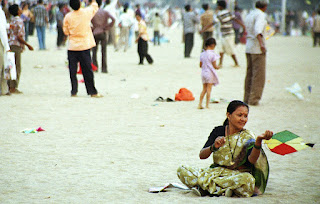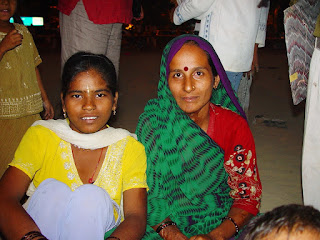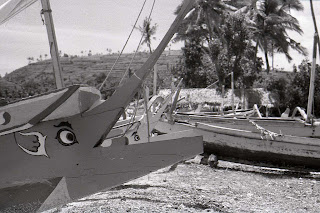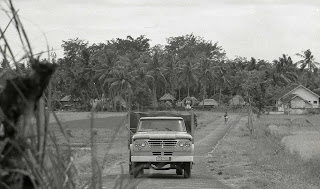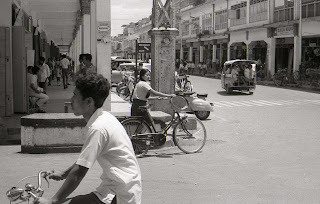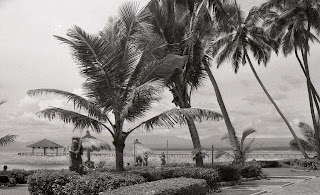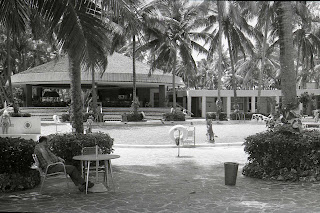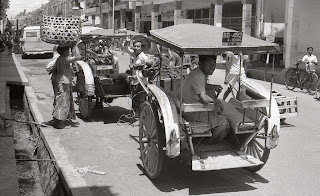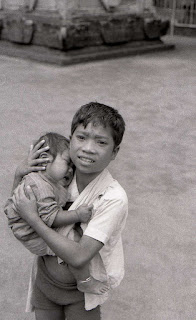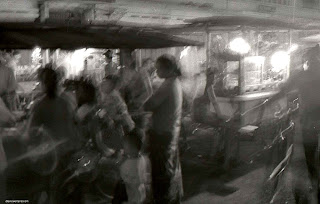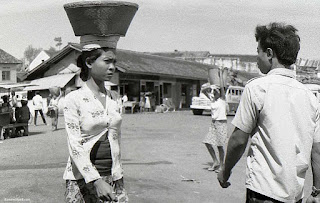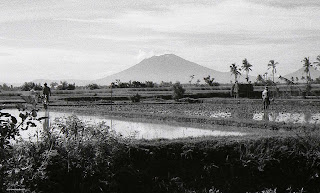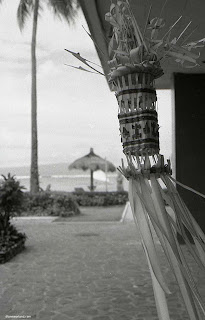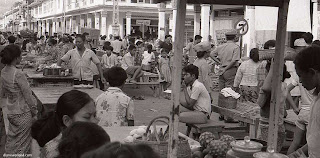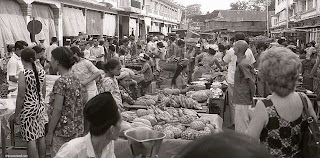In January India celebrates Makara Sankranthi, the world's largest kite flying competition.
The major competition is held in Ahmedabad.
Mumbai celebrates it in a smaller way on Chowpatty Beach.
Chowpatty Beach is on the most northern part of Marine Drive and is Mumbai's most
favourite beaches.
The kite flying competition involves fighting kites. Fighting kites have fins but no tails.
The kites become very dangerous when the lines are embedded with an abrasive. This is usually made of finely crushed glass and glue and turns the kites into attack weapons. Some also have metal knives attached to hook and cut the opponents line.
Prior to the actual festival people congregate on the beach for the simple pleasure of flying kites.
That is where this story starts.
We were in Mumbai on business during January and decided to visit Chowpatty Beach to see the
kite flying and to take some photographs. When we arrived it was late afternoon and we expected to
be there for around 30 minutes. We started off from one end of the beach being very discrete with our cameras. The people on Chowpatty Beach were mainly family groups and they had come to picnic,
have fun and fly their kites. The sky was a colourful patchwork of kites in all shapes and sizes.
Although all castes and layers of Indian society were on the beach there were certainly some
that were not as equal as others. I caught this balloon seller enviously eyeing off the blue jeans
of a smartly turned out boy. A lack of equal opportunity condemns so many.
We were noticed as we were the only Westerners on the beach but everyone was minding
their own business. Everyone that is except a small group of boys.
They came up to us and wanted to know where we were from and what our names were.
Diane and Omar both from Melbourne.
At the mention of Melbourne, in cricket mad India, one of the boys said his name was
Ricky Ponting. The then captain of the Australian Cricket team. And he started giving
us all the details of the MCG, The Melbourne Cricket Ground.
They then asked us to take a photograph of them together. They started
acting up and generally being silly boys for the camera. Some of their friends
rushed over and wanted to get in on the action.
We turned around and there was another group.
And another.
The walk along the beach took on a life of it's own as people jostled to have their portraits taken.
Omar was shooting digital and he could show them the results. I was shooting film so they
got nothing from me. We weren't a film crew. We weren't handing anything out. We weren't
offering to send them or selling them prints. But everyone wanted to get into the picture.
Then it started with families. This gentleman came up to me and asked me to come with him to
photograph his family. Of course I went. Omar and I separated but if he needed me or I wanted to find him we just had to look along the beach for a crowd. The shot below is of his family.
Every time we turned around there was another family lining up for us.
A fantastic opportunity and a lot of fun for all.
This gentleman walked up and said "This my grand daughter. She is beautiful. Take her photograph".
And I did. By now we had been on the beach for 90 minutes.
Half way along the beach I saw what looked like a normal pile of rubbish.
In India that isn't a surprise but it was odd in the middle of the beach.
I looked a bit closer and it was a pile of hundreds of shoes that looked as if
they had been washed ashore. It was a memorial to those who had lost their
lives in the 2005 tsunami.
Still the families came.
Occasionally the crowd would part and I would capture candid moments like this father
and son and the woman below, caught in their own world.
Being new to India we didn't understand certain cultural niceties.
This woman in her brightly coloured tie-dyed sari and her children stood out to Omar.
He asked could he take her photograph and she agreed. After a short time her mother came
up demanding money. The daughter had wanted to be part of what was happening on the
beach and reprimanded her.
As we walked away one of the children who had been following us
sidled up to Omar and told him that he couldn't use his camera anymore.
When asked why he said that the camera was now dirty.
When questioned further he added that Omar had just taken the portrait of
an untouchable and her family therefore the camera was now dirty.
Omar, slightly sarcastically, cleaned the lens on his shirt and that was acceptable.
This was the first time that we had seen the giant rift that is the caste system in India.
We had now been on the beach for two hours and people kept posing.
Finally it got too dark to shoot anymore and I think we had photographed nearly
everyone on the beach. The day's stroll had turned into a Chowpatty Event.
An event that gave us a wonderful record of the faces and families on the beach.
For more Chowpatty photographs visit
<a href="http://phpweby.com/hostgator_coupon.php">hostgator coupon codes</a>





























